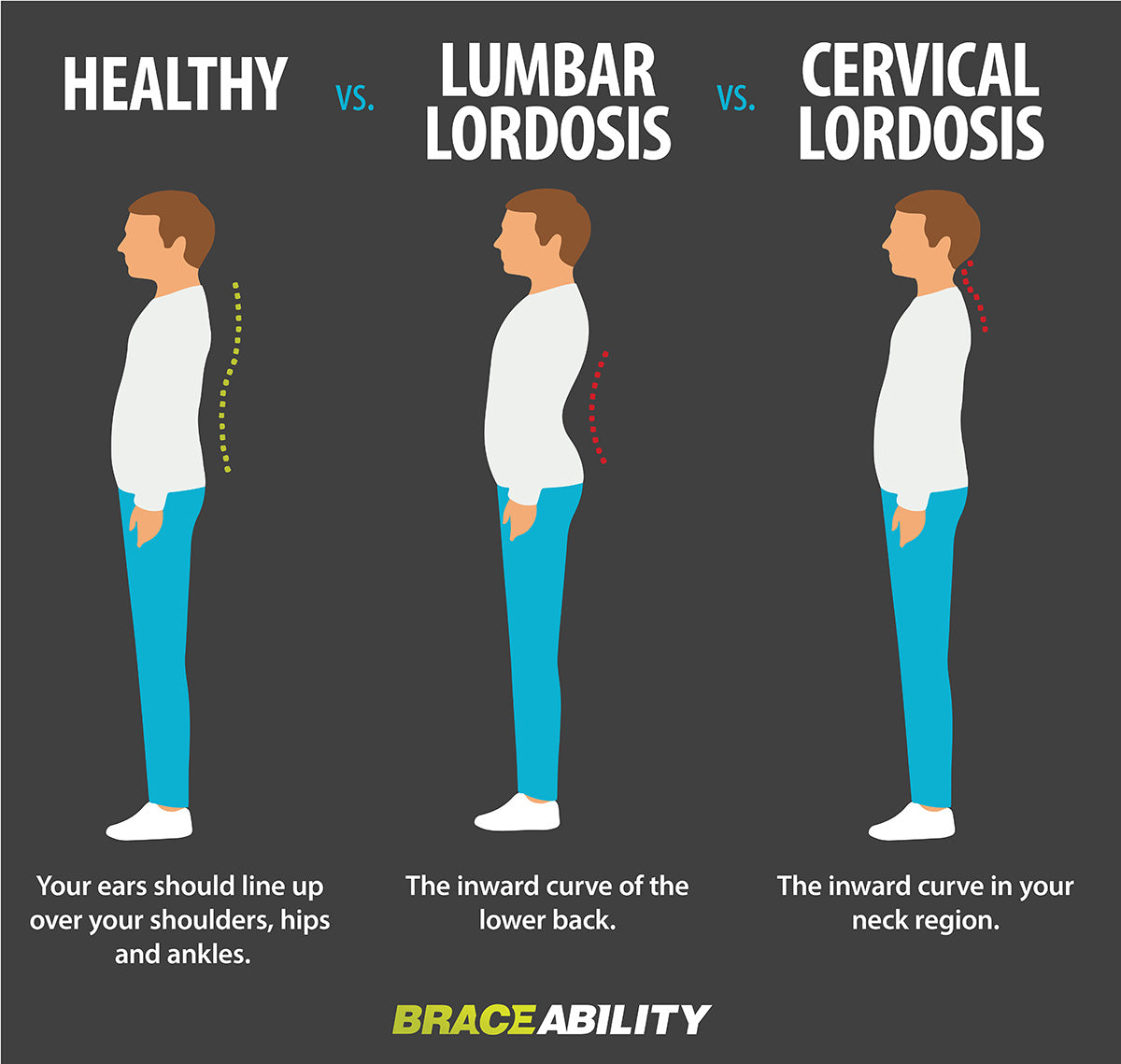Lordosis, commonly known as “swayback,” is a condition characterized by an exaggerated inward curve of the lower spine. The spine is designed with gentle front-to-back curves, which play crucial roles in our posture and movement. In particular, the lumbar region, or the lower spine, naturally has an inward curve referred to as lordosis. However, when this curvature becomes excessive, it can lead to noticeable physical changes and potential discomfort.

Typically, an individual with pronounced lordosis may exhibit prominent buttocks and a swayback appearance. In many cases, the condition is painless, but it can sometimes cause discomfort or pain, especially in the lower back. In children, lordosis gives them a distinct “swayback” look, and in some cases, children might be born with this condition. It’s important to distinguish between normal lordosis and hyperlordosis or excessive curvature.
Causes of lordosis can vary. Some individuals may be born with the condition, while others might develop it due to various factors. Additionally, certain spinal deformities, such as Flatback syndrome, are characterized by the lower spine losing some of its normal curvature, leading to a type of sagittal or front-to-back imbalance in the spine.
It’s also worth noting that lordosis is just one type of spinal curvature. The spine naturally has both lordotic (anterior-ward convexity) and kyphotic (anterior-ward concavity) curves. Kyphosis is observed in the thoracic region and the sacrum, whereas lordosis is found in the lumbar and cervical regions.
While a certain degree of lordosis is normal, particularly in the neck and lower back regions, excessive lordosis might require medical attention. Some patients, due to the nature or severity of their condition, might need treatment or even surgery. Radiological findings can sometimes reveal conditions like straightening of the normal lumbar lordosis, retrolisthesis, and multilevel degenerative changes. If you believe you or your child may have an abnormal spinal curve, consult with a healthcare professional. For more information on lordosis and its treatment options, you can visit reputable medical sources like Washington University Orthopedics or The Children’s Hospital of Philadelphia.
In conclusion, while lordosis is a natural aspect of our spinal structure, excessive curvature can be a cause for concern. By staying informed and consulting with medical professionals, one can ensure optimal spinal health and posture.


